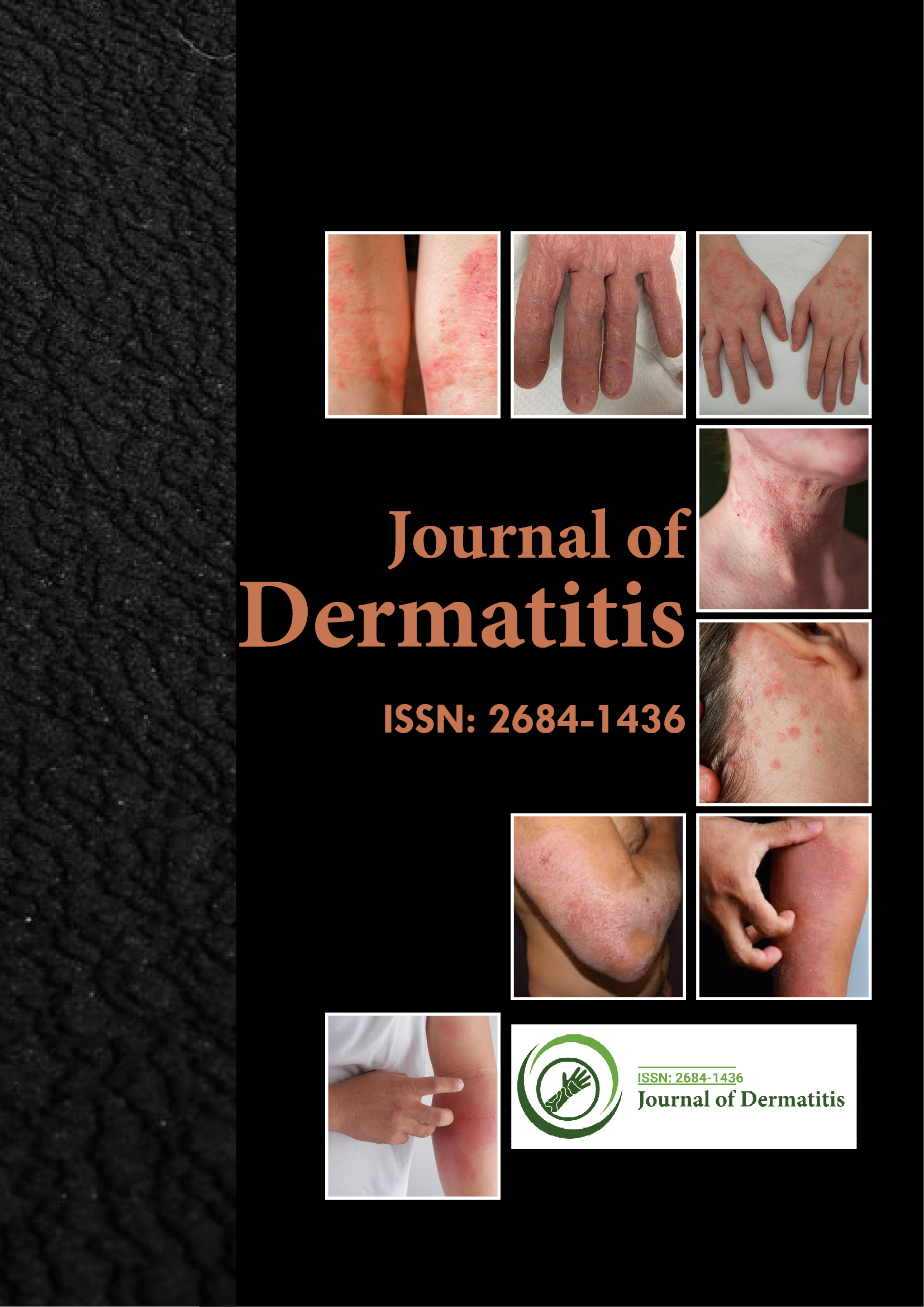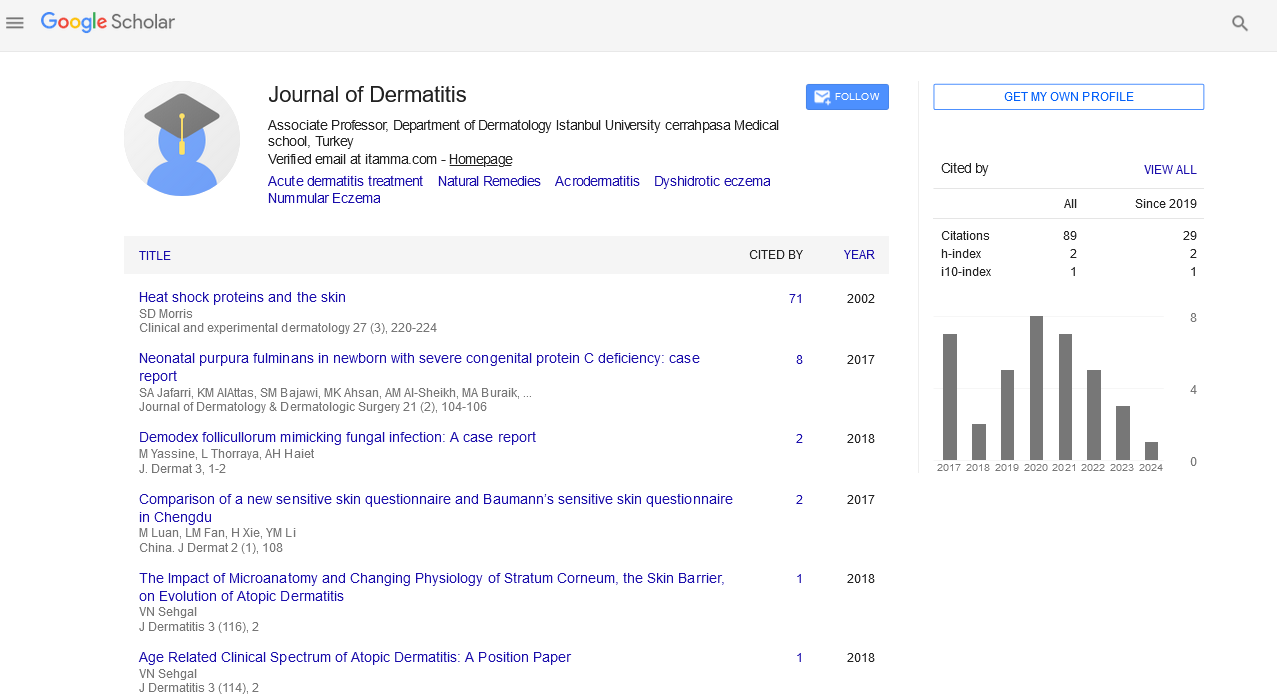Indexed In
- RefSeek
- Hamdard University
- EBSCO A-Z
- Euro Pub
- Google Scholar
Useful Links
Share This Page
Journal Flyer

Open Access Journals
- Agri and Aquaculture
- Biochemistry
- Bioinformatics & Systems Biology
- Business & Management
- Chemistry
- Clinical Sciences
- Engineering
- Food & Nutrition
- General Science
- Genetics & Molecular Biology
- Immunology & Microbiology
- Medical Sciences
- Neuroscience & Psychology
- Nursing & Health Care
- Pharmaceutical Sciences
Perspective - (2021) Volume 6, Issue 5
An Update on Skin Wound Healing
Zhixin Ling*Received: 13-Sep-2021 Published: 04-Oct-2021, DOI: 10.35248/2684-1436.21.6.135
Description
Skin is the largest organ in the human body which is the first line of defense and is composed of many layers of skin cells and it serves the temperature and fluid regulation system to protect the muscles, organs, and other body tissues. The skin can usually able to heal itself but some diseases and injuries will make healing difficult. Wound healing begins immediately after an injury and is also known as healing of the skin. Wound healing is a highly dynamic process that involves a complex sequence of cellular and biochemical events. Skin wound infections are the growth and spread of microbes usually bacteria within the break or wound of the skin and they trigger the body’s immune system and cause inflammation and tissue damage and slow down the healing process. Many skin infections remain constants to a particular area like an infected scratch or hair follicle; if it is untreated it becomes more severe and further spread deeper into the body. Some infections spread to other organs and blood and can cause body-wide infection. If there is any break in the skin or if the immune system is weakened, then microbes can cause wound infection or skin infection. Wounds are the breaks of the integrity of the skin and tissues; they may be scrapes or scratches, deeper cuts, punches, burns, and superficial cuts which may lead to surgical procedures. The healing of large wounds is complicated by other factors and even leads to further tissue destruction and as a wound heals, the edges are drawn together by a process called Contracture and this contracture helps to close the small injuries and cuts of the skin. Tightening of the newly healing of large wounds, particularly at the joint areas near the neck shoulder, hands and elbows can limit or even freeze the movement of the affected area. Some wounds do not penetrate completely through all the layers of the skin and they will heal eventually, and if the skin is destroyed over large areas dues to burs it cannot grow back properly. If the structures residing in the skin survive the injury the hair pigment, sweat glands, and oil may regenerate and if in case they don’t then the new skin may lack the features. When the infections penetrate deep into the body and tissues like bones or when they occur in the tissues that have inadequate circulation then they can become too difficult to treat and may further become chronic infections.
Wound infection interfere with the healing process and will create additional tissue damage but people with underlying conditions are at higher risk of slower wound healing and great risk of wound infections. There are some perfect examples that increase the risk of wound infections like, poor blood circulation, suppressed or weakened immune system, low mobility and immobility and diabetes. Minor wound infection may be uncomfortable but usually heal with one week and large or deeper infections may take up to 2 weeks or even one month or too longer to heal depending up on the treatment and should follow proper precautions. If a person is having an open wound, they must follow some precautions which includes, washing the hands with soap and clean water, remove jewelry around the wound, and apply pressure near the wound to stop bleeding, apply adhesive bandage or Band-Aid and apply anti-biotic ointments. A closed wound that is not sterile can trap bacteria and may cause further infections. Therefore, if a person has an unclean wound with an infection, they should leave it open until they can clean it or the infection clears.
Citation: Ling Z (2021) An Update on Skin Wound Healing. J Dermatitis. 6:135
Copyright: © 2021 Ling Z. This is an open-access article distributed under the terms of the Creative Commons Attribution License, which permits unrestricted use, distribution, and reproduction in any medium, provided the original author and source are credited.

